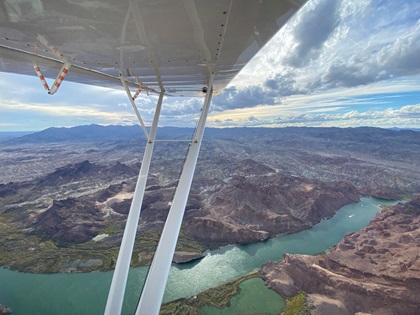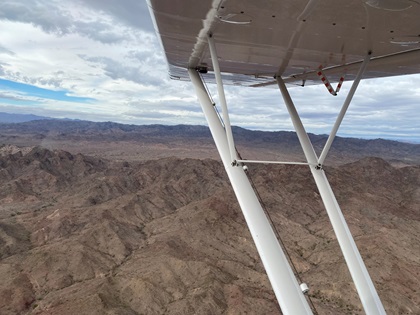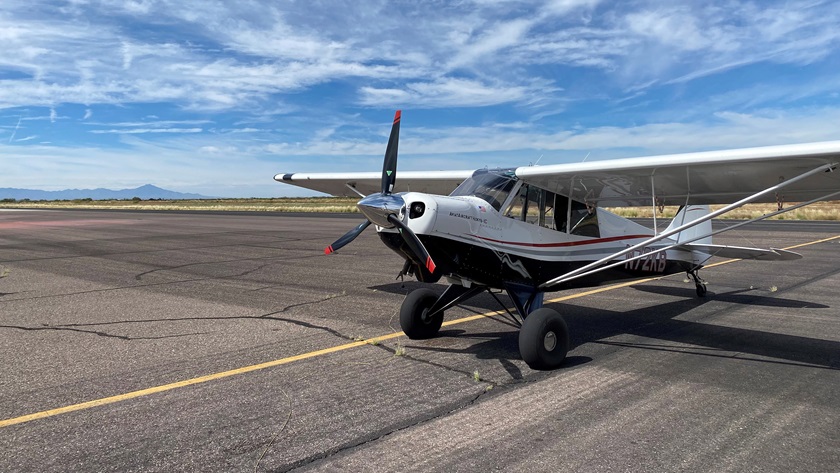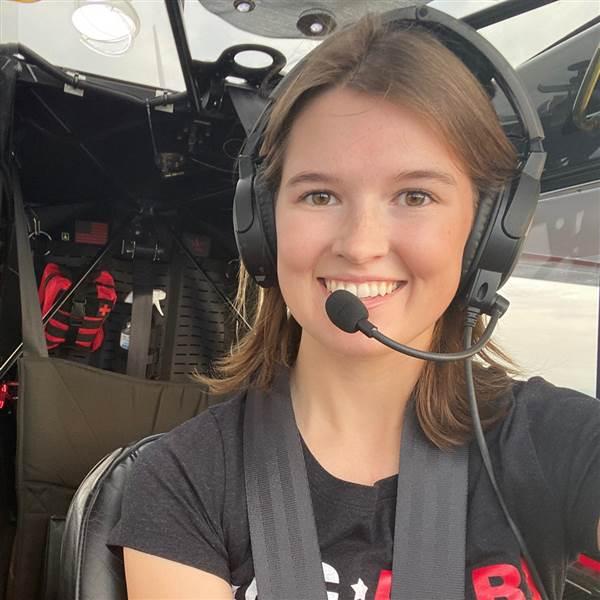High Sierra or bust
Young aviators complete 2,000-mile cross-country in Aviat Husky
Life is good for these two young aviators. Jack Reynolds, 18, and Jacob Gates, 23, flew a 2012 Aviat Husky from Atlanta, to Reno, Nevada, in preparation for the High Sierra Fly-In. These two are paving the way for their generation one mile at a time.
Reynolds was asked by Atlanta-based pilot Craig Blasé to fly Blasé's 2012 Aviat Husky across the country for the popular (and very remote) event that features short-takeoff-and-landing competitions on the Dead Cow lakebed in Nevada.
The pair may be five years apart in age, but they grew up together at the Peach State Aerodrome in Williamson, Georgia. Reynolds started his aviation pursuits as a member of the Civil Air Patrol, and Gates began as a member of the Ron Alexander Youth Aviation Program at the same grass strip.

Both already have extensive aviation résumés. Gates began flying at the age of 16, restored a Cessna 120 when he was 18, and acquired his A&P certificate shortly after that. He has 1,100 hours of flight time and recently landed a job flying right-seat on a Gulfstream. Reynolds began flying when he was only 7, earned his glider rating at 16, and now has more than 500 hours of flight time (300 of those hours in tailwheel aircraft), and recently passed his instrument written exam. Their experience might be why Blasé trusted the two with his beloved Husky, having only met by phone and during a one-hour checkout.
Before their departure, the pair worked to develop a safe and practical flight plan. “I had never been west of Texas, so I had to keep all the different types of terrain in mind,” said Reynolds.
After a delayed start because of low ceilings and rain, Reynolds and Gates departed Dekalb-Peachtree Airport on October 7.

Thanks to free lodging from a friend, Reynolds and Gates spent their first night at the Hank Sasser/Breakaway Airport in Cedar Park, Texas. There, they enjoyed airpark living for a night and a “well-deserved” meal at Chuy’s Tex-Mex restaurant.
After a full night’s rest and a thorough preflight of the 200-horsepower Husky, the young aviators headed west. As they overflew western Texas and eastern New Mexico, they were accompanied by a feeling of “complete desolation,” recalled Reynolds.
Their first fuel stop in Nevada was in an old mining town named Beatty. “Beatty was my favorite stop,” said Reynolds. “It was gusting to 30 knots just before we landed, so we decided to land on the gravel runway instead of the pavement. That was my first time on a gravel strip,” he recalled. Gates added, “They had the nicest fuel pump I had ever seen and a very well-stocked Porta Potty! I think they had 14 rolls of toilet paper!” As any general aviation pilot can attest, it’s all about the little things when you’re crossing the country in a low-and-slow airplane.
As the evening approached, Gates scoured ForeFlight for an overnight stop with shuttle service to a nearby hotel. They decided on the Laughlin/Bullhead International Airport in Bullhead City, Arizona, and landed just before the sun set on their second day. After filling up, they were surprised to discover that the town was famous for its casinos. Reynolds, who is three years shy of being legally allowed into a casino, called his friends to say, “This place is like a mini Vegas. What are we supposed to do?” Luckily, the shuttle driver was able to find them a suitable place to stay at the Riverside Hotel.
“Always do your research before stopping for an overnight…we always research the airport, but we might not research the town. It’s important to know what you’re getting into,” Reynolds said.

After an uneventful night at Laughlin, Reynolds and Gates headed north to Reno. As they approached the foothills of the Sierra Nevada, they noticed an abrupt change in landscape. “There was no good place to land for over an hour, but it was gorgeous,” said Gates.
On October 9 the two young pilots landed the Husky at the Reno/Tahoe International Airport, where it awaits the arrival of its owner in his “go-places-airplane,” a Pilatus PC–12.
At the conclusion of the High Sierra Fly-In, Reynolds will airline back to Reno to fly the 2,000-mile, 21-hour trek home. He is hoping to alter his return flight to include stops around Lake Havasu and Sedona in Arizona.
Time-building opportunities can be a struggle for many new pilots, but ferrying airplanes for owners is a cost-effective way to log time and experience. “Make sure you have your commercial certificate and build your relationships with people around the airport,” said Gates. “You never know who might need an airplane ferried across the country, but you always want to be the first person someone thinks of.”





